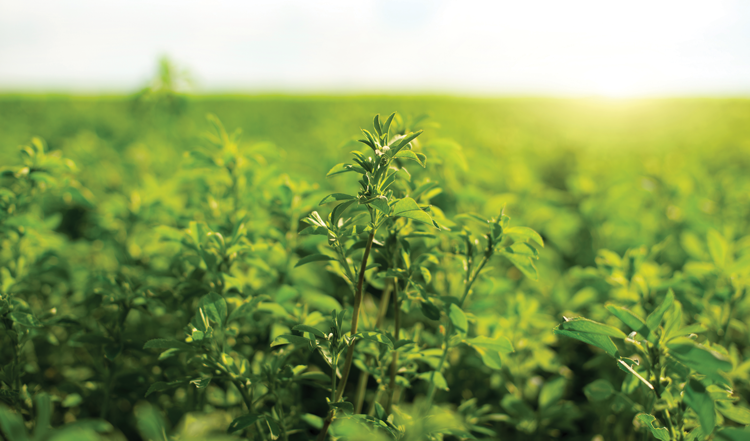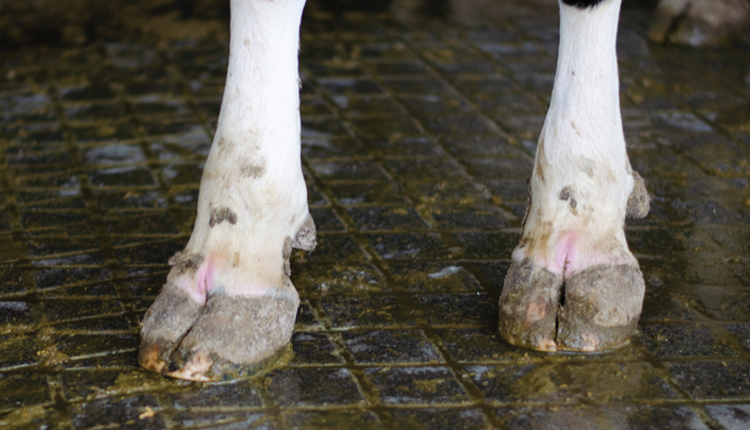
Dairy farmers are constantly seeking sustainable and cost-effective feed options for their cows. While alfalfa is a popular forage source, at times it can be expensive and limited by its availability. Therefore, alternative feed options such as distillers dried grains (DDGS), citrus pulp, and beet pulp are being investigated to partially replace alfalfa in dairy cow diets.
DDGS, a co-product of the ethanol industry, provides protein, energy, and minerals that can replace some ration alfalfa without affecting milk production or cow health. However, DDGS alone does not provide sufficient effective fiber levels that are essential for a cow’s digestive health. When adding DDGS to rations, alternative forage sources such as hay or straw should be used to ensure enough effective fiber. By blending DDGS with forage sources, farmers can promote sustainable farming practices and reduce their costs.
Using the average values provided by the NRC 2021 Dairy Nutrient Requirements of Dairy Cattle, the nutrient concentration of a blend of one-third wheat straw and two-thirds DDGS shows the following nutrient concentration:
- Crude protein (CP) = (1/3 x 4.25%) + (2/3 x 28%) = 18.7%
- Neutral detergent fiber (NDF) = (1/3 x 77.5%) + (2/3 x 40%) = 35.5%
- Net energy of lactation (NEL) = (1/3 x 0.59 Mcal/kg) + (2/3 x 2 Mcal/kg) = 1.68 megacalories per kilogram (Mcal/kg)
This nutrient concentration is very similar to that of dairy alfalfa hay with a relative feed value (RFV) of 150 which contains:
- CP = 18% to 22%
- NDF = 38% to 42%
- NEL = 1.4 to 1.6 Mcal/kg
Does it perform?
A recent experiment conducted at the University of Nebraska examined the effects on milk production and energy utilization of dairy cows fed a blend of straw and DDGS partially replacing alfalfa hay. The hay was replaced in the treatment diets with a straw/DDGS blend containing approximately one-third wheat straw and two-thirds DDGS as follows:
- Control diet with 18.2% alfalfa hay, 0% distillers dried grains, and 0% straw.
- 12.1% alfalfa hay, 6% distillers dried grains, and 2.1% straw.
- 6.1% alfalfa hay, 12.1% distillers dried grains, and 4.2% straw.
- 0% alfalfa hay, 18.1% distillers dried grains, and 6.2% straw.
The study found that incorporating DDGS in dairy cow diets raised organic matter digestibility in Diets 2 and 3 but reduced it in Diet 4. However, the digestibility of fiber fraction rose with DDGS in the diet while methane production and water intake fell. Including 6% and 12.1% DDGS in the diets produced more energy-corrected milk and fat.
To formulate a dairy cow’s diet, farmers must consider factors like cow nutrition, feed composition, management practices, and economics. For example, a cow producing 100 pounds of milk with 3.3% protein and 3.7% fat requires a total mixed ration (TMR) with 16% to 18% crude protein and 1.6 to 1.8 Mcal NEL/kg.
To replace some of the alfalfa in the TMR, farmers can use wheat straw and DDGS, which can provide cost savings. Let us assume feed prices of alfalfa hay, $250 per ton of 150 RFV alfalfa; wheat straw, $80 per ton; and DDGS, $275 per ton.
If we replace 9 pounds of alfalfa with 3 pounds of straw and 6 pounds of DDGS, the total annual savings per 1,000 cows would be $32,000. To calculate the percentage savings, we divide the savings by the cost of the original diet, which is the cost of 1,460 tons of alfalfa. The savings would be 6.3%, or close to 20 cents per cow daily.
Dairy farmers can lower costs by replacing expensive alfalfa with by-products such as DDGS. Replacing alfalfa with straw and DDGS can provide cost savings, particularly in regions where alfalfa is scarce or expensive.











